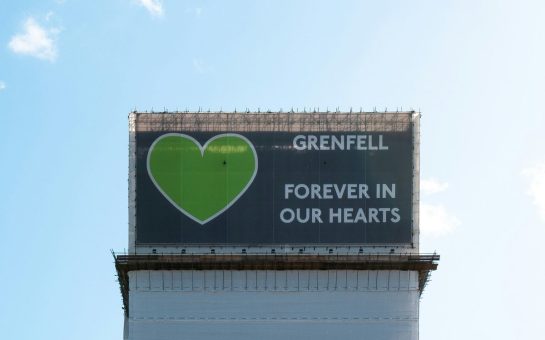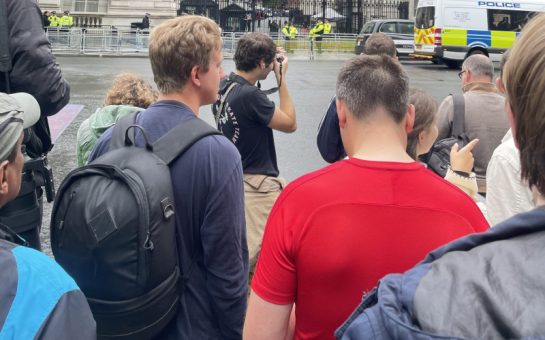Neil Dorgan
August 24 2020, 17.25
Follow @SW_Londoner
Three years on from the Grenfell tragedy, 145 private and social high-rise buildings in London, which includes at least 10,000 dwellings, still have the same Aluminium Composite Material (ACM) cladding in place as Grenfell.
These figures, relating to the removal and replacement of unsafe cladding in England, were released by the Ministry of Housing, Communities & Local Government (MHCLG) last week and are accurate as of July 31.
“It’s affecting people’s lives. It’s not just the fact that they could burn to death in their sleep, it’s also the fact that they could lose their flat and everything that they’ve ever put into it,” said Ed Spencer, 37, a leaseholder living in east London, who was informed three months ago that his building had cladding concerns.
In May 2018, the UK Government announced it would fund the removal and replacement of unsafe ACM cladding, unlikely to meet building regulations, at a cost estimated of £400 million.
It has since emerged there are other unsafe cladding materials that behave similarly to ACM cladding, for example High Pressure Laminate (HPL) panels, and collectively they are known as non-ACM cladding.
To help address this issue and to remove unsafe non-ACM cladding, the Chancellor, Rishi Sunak announced the introduction of a further £1 billion Building Safety Fund, in March.
But Neil O’Connor, director of building safety at MHCLG, speaking to the Communities and Local Government Select Committee in June, confirmed the working assumption is that the full remediation cost will be closer to £3.5 billion.
If housing associations with unsafe non-ACM cladding are deemed ineligible for remediation costs through the Building Safety Fund, they may look to push costs on to leaseholders.
This is what happened to leaseholders at the Skyline Central apartments in Manchester earlier this year, who were told they needed to pay fees of between £15,000 and £25,000 per apartment, to cover remediation work.
Draft Building Safety Bill
Robert Jenrick, Secretary of State for MHCLG, introduced a Draft Building Safety Bill in July to reform building regulations, which he claimed would bring about the biggest improvements to building safety for a generation.
The Draft Building Safety Bill has further alarmed leaseholders as it includes a provision that leaseholders could be held liable for remediation costs of up to £78,000 which may need to be paid, on demand, within 28 days.
Mr Spencer assumed that he and his fellow tenants would be covered through their insurance but was distraught to later find out the warranty section applying to cladding wasn’t applicable, as the building control was completed by the council.
“It’s insane, these materials have never been tested properly. We are in a situation where we don’t really know what is wrong with our building, we don’t know how much we are going to have to pay, and we have only been told three months ago that we may have cladding,” said Mr Spencer.
“The government has to clarify who is paying and they have to make that legal. They have to decide who pays for this and it can’t be the leaseholders. You can’t have thousands of people up and down the country, who suddenly find out they are bankrupted through absolutely no fault of their own.”
Leaseholders feel trapped
Leaseholders have found themselves trapped, unable to sell or re-mortgage their properties as most high-street lenders now look for confirmation that high-rise buildings have been tested in line with the External Wall Survey (EWS1), introduced in December 2019, to provide lenders with more confidence.
The EWS1 Form was designed to ensure high-rise blocks of flats adhere to fire safety rules and, although not mandatory, is causing issues for flat owners and led to the Housing, Communities and Local Government Committee, in June, to describe the process as ‘slow and expensive’ and ‘being applied to an unnecessarily wide range of buildings’.
There have also been reports of leaseholders being charged for ‘waking watch’ cover and other fire safety retrofits (sprinklers and fire blockers), which is leading to a breakdown of trust between leaseholders and their Housing Associations.
Some leaseholders are anxious about sharing too many details publicly in case media exposure leads to their properties being further devalued or stigmatised.
A married couple, whose young daughter recently celebrated her first birthday living in an apartment in east London, noted: “Ultimately we’ve worked so hard to set up a future for our family yet now we’re prisoners in our own home with the burden and pressure of the situation preying on our minds every day.
“Not only could this potentially be financially crippling for us but our bigger concern is the mental impact this ongoing burden will have over the years to come.”
Hilary Benn, MP for Leeds Central, wrote to Robert Jenrick after the release of the Draft Building Safety Bill in July, looking for clarity for leaseholders and questioning the consistency of the draft bill with previous government strategy of not attributing the costs of fixing dangerous cladding to leaseholders.
1/2 My letter to @RobertJenrick about the potentially huge costs leaseholders could face as a result of the Building Safety Bill. This cannot be allowed to happen. @LeedsCladding pic.twitter.com/lSIjjcUNbg
— Hilary Benn (@hilarybennmp) July 26, 2020
Mr Spencer, exasperated, remarked: “We have a flat that’s eight years old and it’s flammable. How has that happened in 2012, it’s insane.”




